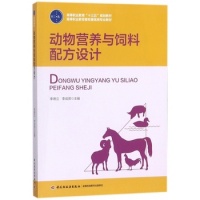考虑灾民痛苦感知的应急避难所选址与物资分配优化
摘要: 大规模灾害发生初期,应急物资往往不能及时供应,受灾群众因缺乏物资和服务产生痛苦感知。针对该问题,设计数值评定量表(NRS)构建痛苦函数,刻画灾民痛苦感知成本,将灾民感知因素纳入应急总成本的决策考量。提出以总社会成本(物流成本和痛苦心理成本之和)最小为应急救援目标,构建了一个考虑灾民疏散与重新安置、临时避难所选址和物资分配的集成优化模型。设计经典混合整数规划方法和改进的遗传算法对所构模型进行求解,并应用于海南威马逊台风案例。案例分析表明,模型和算法能有效解决考虑灾民痛苦的避难所选址与物资分配问题,揭示了随着受灾规模的增加和疏散时间的减少,遗传算法的求解结果优于经典求解方法。
关键词: 应急管理, 痛苦感知, 应急避难所, 选址分配, 改进遗传算法
Abstract: The large-scale disasters have seriously destroyed or collapsed the original social and economic systems in the affected areas. After the disaster, the currency could not circulate, the infrastructure is damaged and the supply chain of economic market is disrupted. These problems often lead to the shortage of emergency supplies. Furthermore, the lack of basic survival and living materials will lead to the discomfort of individuals and bring anxiety and pain to the affected people. To reduce the human suffering and conduct the relief operation effectively, it is urgent for decision makers to incorporate beneficiaries' perception into total cost of emergency relief. In this paper, a numerical rating scale (NRS) is designed to construct a human suffering function, which can describe the suffering perception cost of the beneficiaries.According to the principles in welfare economics, the concept of social cost is first proposed in emergency management. It refers to the sum of logistics cost and suffering perception cost. An integrated optimization model is proposed to combine evacuation and resettlement of the affected people, location of temporary shelters and distribution of relief materials, whose objective is to minimize total social cost. The classical mixed integer programming method and improved genetic algorithm are designed to solve the model effectively. Finally, the performance of the two methods is compared by numerical simulation.Comparisons of three simulation scenarios indicate that the number of transferrable population obtained by using genetic algorithm is larger and the total social cost is smaller as the increase of the maximum rescue time. The model and algorithm are applied to the case of 2014 typhoon rammasun in Hainan province in China. The results further show that in order to maximize the rescue effectiveness, more shelters need to be built and sites should be located near the affected areas.In addition, each shelter needs more transport vehicles to evacuate more people in a shorter rescue time. It provides an effective suggestion to help post-disaster managers to enhance the effectiveness of emergency rescue operations.
Key words: emergency management, human suffering, emergency shelters, location-allocation, improved genetic algorithm
中图分类号:
C93
相关知识
石川县举行宠物救援活动,支持与宠物一同避难的灾民
地震安全手册
我国组建救灾快速反应“部队”加强灾害应急能力
狗狗能感知主人的痛苦!
辐射:避难所宠物领养指南一览
广州市举行突发事件现场指挥部综合应急演练
意大利震后启动宠物救援
人类应急食品大赏:日本的精致,法国的美味,美国的最“豪横”?
最新消防的应急预案脚本(15篇)
纸箱宠物活动策划方案.pptx
网址: 考虑灾民痛苦感知的应急避难所选址与物资分配优化 https://m.mcbbbk.com/newsview238991.html
| 上一篇: 看懂狗狗肚子痛,不再让宠物痛苦难 |
下一篇: Science:大脑岛状皮质区域 |


